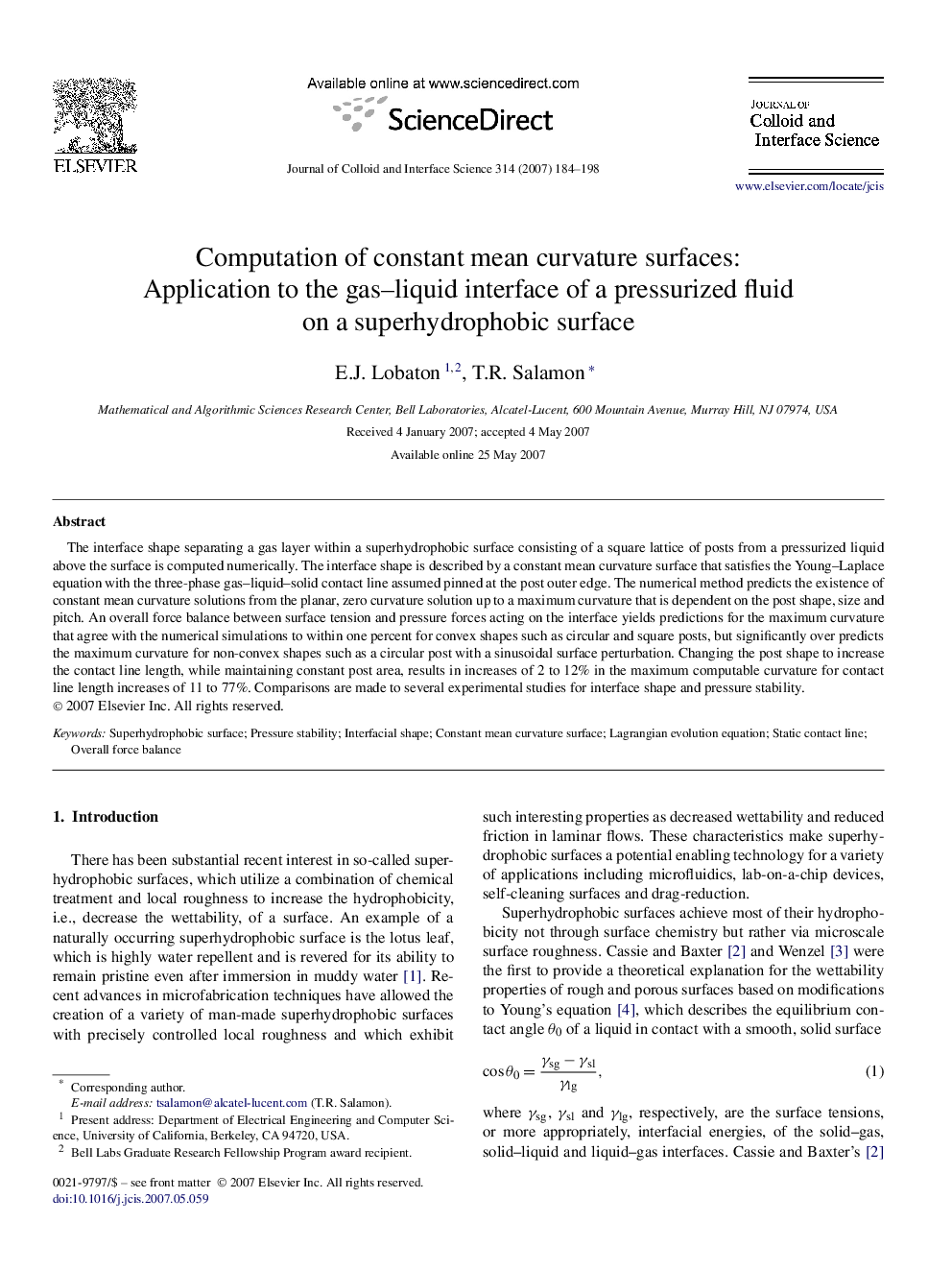| Article ID | Journal | Published Year | Pages | File Type |
|---|---|---|---|---|
| 612226 | Journal of Colloid and Interface Science | 2007 | 15 Pages |
The interface shape separating a gas layer within a superhydrophobic surface consisting of a square lattice of posts from a pressurized liquid above the surface is computed numerically. The interface shape is described by a constant mean curvature surface that satisfies the Young–Laplace equation with the three-phase gas–liquid–solid contact line assumed pinned at the post outer edge. The numerical method predicts the existence of constant mean curvature solutions from the planar, zero curvature solution up to a maximum curvature that is dependent on the post shape, size and pitch. An overall force balance between surface tension and pressure forces acting on the interface yields predictions for the maximum curvature that agree with the numerical simulations to within one percent for convex shapes such as circular and square posts, but significantly over predicts the maximum curvature for non-convex shapes such as a circular post with a sinusoidal surface perturbation. Changing the post shape to increase the contact line length, while maintaining constant post area, results in increases of 2 to 12% in the maximum computable curvature for contact line length increases of 11 to 77%. Comparisons are made to several experimental studies for interface shape and pressure stability.
Graphical abstractCalculated interface shape between four adjacent posts in a square lattice of cylindrical posts.Figure optionsDownload full-size imageDownload as PowerPoint slide
